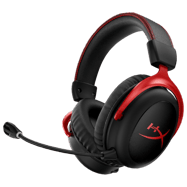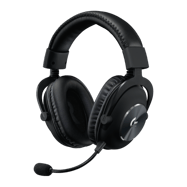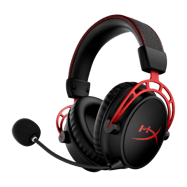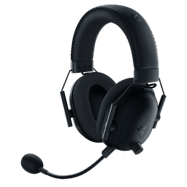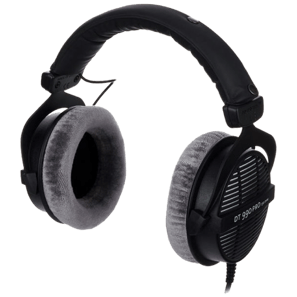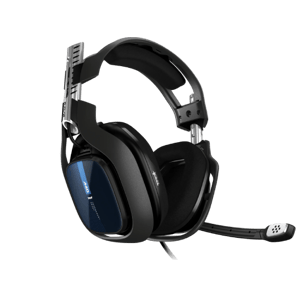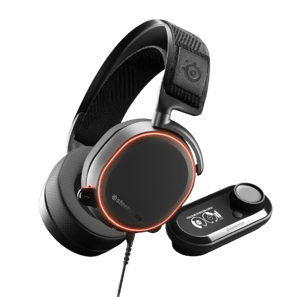The most used headsets by Fortnite players
The most popular headsets are calculated based on 177 professional players.
Introduction
Sight and hearing are two of the most important senses when it comes to gaming, but the latter gets ignored by gamers all too often.
Having a good audio setup that allows you to hear precisely what the enemy is doing and where they’re doing it can feel like borderline cheating and you’re doing yourself a disservice if you’re just using some cheap earbuds or PC speakers in our opinion. We’ve set out to see what the professionals are using and we’ll go over the features of the most popular Fortnite headsets in the professional scene.
Our Guide
The Pro Usage Top 5 gets updated continuously and instantly so that you can always get an accurate overview of what the pros are using at any given time. In the body of the article itself, we go over the five most popular pro products in no particular order and, when relevant, we also give you some extra options in the form of products that fall just outside of the top 5 or are otherwise relevant.
What makes a headset good for Fortnite?
Headsets come in all sorts of shapes and with a wide variety of functions, and it’s going to be up to the end user to decide what they want to use when it comes to those functions and extra features.
In the end the two most important factors to consider when buying a headset are comfort and sound. You could have the best sounding set of cans in the world, but if it’s going to be physically uncomfortable for you to wear then it’s not gonna be an option for anything that has you wearing them for longer than a couple of minutes.
Most gamers tend to go for a real headset (i.e. something with a mic attached to it) because it’s often way more portable and convenient, but if you’re someone who’s mostly gaming at home behind your own desk you can certainly opt for a regular pair of headphones along with an external microphone. You don’t need a gaming branded headset for gaming, after all. What you do need is an audio solution that’s good at handling positional audio and doesn’t drown out important sounds in the mid and high register (reloading, footsteps, …) in favor of thumping bass sounds.
Top headset brands in Fortnite
Last updated:
| Rank | Name | Used by # players | Perc. |
|---|---|---|---|
| 1 |
|
51 | 28.81% |
| 2 |
|
28 | 15.82% |
| 3 |
|
27 | 15.25% |
| 4 |
|
18 | 10.17% |
| 5 |
|
16 | 9.04% |
Logitech G Pro X
Logitech’s G Pro X is one of the newer entries in their line aimed at pro and competitive gamers, and it seems to be yet another product in that line that hits the mark. It’s also the first headset that managed to beat the HyperX Cloud II to the throne in a very, very long time.
The G Pro X might look a bit unassuming and pedestrian but it’s really anything but. It’s packing Blue VO!CE microphone technology, for starters. You can tweak the settings of that mic as well so that you can ensure that your voice is coming through with the required clarity whilst still eliminating any background noise or other unwanted factors.
The frame of the G Pro X is made out of aluminum and steel so it’s plenty durable. There’s also memory foam cushioning for that comfortable feeling even after hours of gaming, so there’s absolutely no need to worry about the build quality either.
The actual sound is very respectable too; the G Pro X comes with DTS HEADPHONE:X 2.0 technology and a host of available EQ presets to choose from so that the sound profile of the headset matches the game you’re playing perfectly. In short: this is a great headset for competitive gamers who want a great sounding headset with a very good mic and don’t care about flashy aesthetics or anything of the sort.
Logitech G Pro X Headset
Used by 20 Fortnite players ()The wired G Pro X is a great piece of equipment, delivering great audio, supreme comfort, and one of the best mics in the business, all packed into a stylish and attractive design.
Pros
- Great microphone
- Good audio quality
- Comfortable fit
- Blue VO!CE technology improves mic quality even further
- Good build quality
Cons
- Relies on software for most of its functionality and is therefore not as suited for console use
Specs
| Type | Closed-Back |
|---|---|
| Connection | Wired |
| Cable Length | 200cm |
| Noise Cancelling | No |
| Microphone | Detachable |
| Weight | 338g |
HyperX Cloud II
If you’ve taken a look at our pro settings and gear lists over the past couple of years you’ll find that most of them have at least one thing in common, and that’s the fact that they all heavily feature the HyperX Cloud II, so HyperX must be doing multiple things right with this headset.
If you look at it on the surface there’s plenty to like: it’s a no-nonsense headset that’s built with nicely finished materials and it doesn’t feature any overly ‘gamery’ design elements which, along with the detachable mic, make it great to use as an on-the-go headset as well.
The Cloud II also includes two sets (leatherette and velours) of interchangeable ear cups, which is great if you don’t like the feeling of leatherette or for when you just want to swap to the more airy velours pads in the summer, for example.
The Cloud II’s can be used (in regular stereo mode) on console or mobile as well, which further emphasizes the ‘industry standard’ feeling that you get with this particular product.
One of the possible downsides here is that it doesn’t come with any software, so if you want to quickly switch between something like a more bass-heavy cinematic gaming profile and a flatter music profile you’re out of luck with the Cloud II’s as there is no EQ software to go along with the product. The sound itself is tuned nicely for gaming and performance, but these days there are better sounding headsets out there in the same price category.
If you want an extremely solid and dependable headset that’s tuned for competitive gaming, the Cloud II is still one of the best options on the market, even years after its release.
HyperX Cloud II
Used by 23 Fortnite players ()The HyperX Cloud II has been the ‘industry standard’ headset for many, many years now. It has earned that reputation thanks to its reliable build quality, comfortable design, and friendly price.
Pros
- Sturdy design
- Two choices of earcup material
- Industry-proven
Cons
- Rather barebones when it comes to functionality
- Not the best mic
- Sound quality isn’t the best these days
Specs
| Type | Closed-Back |
|---|---|
| Connection | Wired |
| Cable Length | 300cm |
| Noise Cancelling | No |
| Microphone | Detachable |
| Weight | 320g |
beyerdynamic DT 990 Pro
The beyerdynamic (this isn’t a typo; beyerdynamic doesn’t capitalize their name on their website either) DT 990 Pro is the odd one out in the sense that it isn’t something that’s even marketed towards gamers.
The DT 990 Pro is actually an open-back pair of studio headphones, which is made primarily for producers and professionals in the music industry. It shouldn’t come as a surprise that people who work in this industry need their sound to be as clear and precise as possible, so if it’s good enough for professional musicians it should be good enough for professional gamers, right?
The DT 990 pro offers a very open soundstage thanks to it’s open-back design. Open-back headphones aren’t completely sealed around the back, meaning that air (and noise) can freely travel through the earcups. This results in a broader and more ‘wide feeling’ soundstage when compared to closed-back products, which to a lot of people sounds better, but there are some tradeoffs.
Open-back headphones are (obviously) open, which means that sound can and will come in, so if you’re often gaming in a noisy environment or you want to hear as little outside noise as possible when gaming you probably don’t want to go for an open-back pair. If sound can come in it can also get out, so whatever you’re listening to will be much more audible to people around you if you’re rocking an open-back as well.
All in all the DT 990 Pro is a professional-grade pair of headphones, and it’s gonna be a fantastic option if you’re willing to invest in a separate external mic and if you’re gaming in a low-noise environment.
beyerdynamic DT 990 Pro
Used by 20 Fortnite players ()The beyerdynamic DT990 Pro is an industry standard in the music scene, and its open-back design and extremely comfortable frame have been sitting on the heads of tons of music professionals over the years. It’s one of the best ways to buy yourself an entry ticket into the world of audiophile headphones, and if you’re looking to expand beyond regular gaming headsets this is a fantastic starting point.
Pros
- Extremely comfortable
- Great sound
- Affordable way into audiophile headphones
- Open-back design makes for a wide sound
Cons
- Not a lot of noise isolation due to the open-back design
- No customization options
- No built-in microphone
Specs
| Type | Open-Back |
|---|---|
| Connection | Wired |
| Cable Length | 300cm |
| Noise Cancelling | No |
| Microphone | No Microphone |
| Weight | 375g |
HyperX Cloud Alpha
The HyperX Cloud Alpha tries to improve on the Cloud II by housing dual drivers which improve the audio quality and also implementing a slightly better microphone, though it doesn’t offer virtual 7.1 surround sound.
Other than that, these headsets are basically the exact same. There are some minuscule differences in design, and the Alpha doesn’t come with any additional earcups, but other than that it’s up to you to decide what you prefer. Some people absolutely want the virtual 7.1, while others prefer the slightly better sounding (7.1-less) Alphas.
This headset is also fully compatible with consoles and mobile (as well as PC, obviously) so if you’re primarily a console gamer you can definitely go for this one, as the virtual 7.1 surround won’t work on console anyway.
HyperX Cloud Alpha
Used by 14 Fortnite players ()The HyperX Cloud Alpha is a barebones and straight-to-the-point offering by HyperX. It’s made for people who don’t want to be bothered with tuning EQs and the likes, and this plug-and-play headset is well-respected for its excellent durability and solid audio quality.
Pros
- Sturdy and reliable design
- Decent audio quality
- Comfortable
Cons
- Pretty much no customization options
Specs
| Type | Closed-Back |
|---|---|
| Connection | Wired |
| Cable Length | 200cm |
| Noise Cancelling | No |
| Microphone | Detachable |
| Weight | 298g |
ASTRO A40
If you’re an older gamer and you’ve watched some competitive gaming a couple of years ago, you’ll no doubt recognize the design of this headset since it’s pretty much the same as the official MLG headsets from back in the day. ASTRO goes back a pretty long way as a gaming audio company, and this A40 is a fine addition to their lineup of headsets.
The main selling point of this headset, if you ask us, is that it can be customized to your liking by purchasing additional earcup covers and the likes. These additional elements, much like the headset itself, are rather expensive though, so if you really don’t care for the customization aspect of this headset at all we do recommend looking towards other products.
If you do want to add a little flair to your setup, the A40 won’t disappoint. The sound quality is very decent, the same can be said for the microphone, and it’s a very comfortable headset that’ll last you for quite some time.
ASTRO A40
Used by 6 Fortnite players ()The ASTRO A40 is definitely a gaming headset, as it immediately makes that clear with its looks. It also backs it up with its performance, though. The audio quality is more than decent, and the same can be said for the microphone. It’s also very customizable so you can really make it yours.
Pros
- Comfortable
- Tons of customization options
- Good audio quality
Cons
- Design won’t suit everyone
- Rather expensive
- Additional customization options are on the more expensive side
Specs
| Type | Open-Back |
|---|---|
| Connection | Wired |
| Cable Length | 200cm |
| Noise Cancelling | No |
| Microphone | Detachable |
| Weight | 369g |
SteelSeries Arctis Pro
The SteelSeries Arctis Pro used to be the brand’s top tier gaming headset, but it has since been succeeded by the likes of the Arctis Nova Pro. The fact that the Arctis Pro is an older headset at this point in time can serve as an advantage, however, seeing as you’re more likely to be able to snag this one up at reduced prices.
The Arctis Pro is a fantastic top tier gaming headset that’s comfortable, built really sturdily, and offers up a wide variety of ways to customize the sound. The sound quality that it puts out is great, and the microphone is good as well, even judging by today’s standards. If you’re looking for the absolute best of the best we would recommend SteelSeries’ newer offerings, but if you’re on a bit of a budget then this can be a fantastic way of buying yourself into the high tier SteelSeries audio ecosystem.
SteelSeries Arctis Pro
Used by 5 Fortnite players ()If you’re looking for a dedicated gaming headset with lots of configurable features that can handle media consumption at a high level too then this is definitely one of your best options right now.
Pros
- Great microphone quality
- Good build quality
- Comfortable
- Great sound quality
Cons
- High price
- On-board controls are placed a little awkwardly
- Control dongle on the cable can get annoying
Specs
| Type | Closed-Back |
|---|---|
| Connection | Wired |
| Cable Length | 300cm |
| Noise Cancelling | No |
| Microphone | Non-Detachable |
| Weight | 357g |
Best Headset for Fortnite – Conclusion
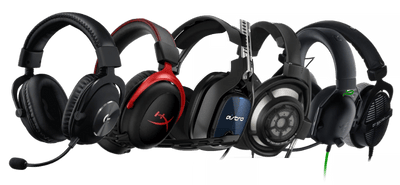
There are many, many options when it comes to audio. A gaming headset is still being used by the vast majority of professionals (which makes sense since gaming headsets are, you know, made for gamers) but it’s certainly worth it to take a look at some other audio solutions if you’re a gamer who is playing at home 99% of the time.
Hopefully this list has helped you on the way to finding your own ultimate Fortnite headset, but if you have any questions then please feel free to reach out to us.


